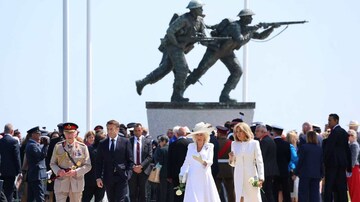
June 6, 2024 marks the 80th anniversary years since D-Day, the first day of the Normandy landings that laid the foundations for the Allied defeat of Nazi Germany in World War II. The invasion was codenamed Operation Overlord, which saw thousands of troops from countries including the United States, the United Kingdom and Canada landing on five stretches of the coastline of Normandy, France – codenamed Utah, Omaha, Gold, Juno and Sword beaches. (Image: Reuters)

Shortly after D-Day in 1944, the American soldiers heading out to more fighting against Adolf Hitler's forces couldn't help but notice the hungry French boy by the side of the road, hoping for handouts. One by one, the men fished fragrant, brightly-colored spheres from their pockets and deposited them in Yves Marchais' hands. (Image: Reuters)
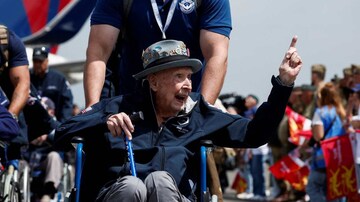
The 6-year-old boy had never seen the strange fruits before, growing up in Nazi-occupied France, where food was rationed and terror was everywhere. Thrilled with his bounty, the young Marchais counted them all — 35 — and dashed home for his first taste of oranges. But also seared into survivors’ memories in Normandy are massive Allied bombing raids that pulverized towns, villages and the cities of Caen, Rouen and Le Havre, burying victims and turning skies fire-red. (Image: Reuters)
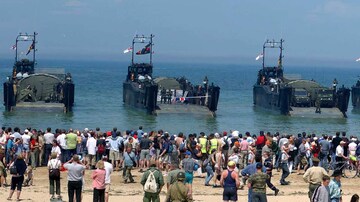
Planning for D-Day began more than a year in advance, and the Allies carried out substantial military deception to confuse the Germans as to when and where the invasion would take place. The 80th anniversary of the Allied invasion on D-Day on June 6, 1944 that punched through Hitler's western defenses and helped precipitate Nazi Germany's surrender 11 months later brings mixed emotions for French survivours of the Battle of Normandy. They remain eternally grateful for their liberation but cannot forget its steep cost in French lives. (Image: Reuters)

When the Allied forces landed it was a thrilled with his bounty, the young Marchais counted them all — 35 — and dashed home for his first taste of oranges. But also seared into survivors’ memories in Normandy are massive Allied bombing raids that pulverised towns, villages and the cities of Caen, Rouen and Le Havre, burying victims and turning skies fire-red. (Image: Reuters)
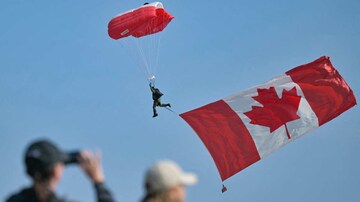
Marchais remembers his family's house in Carentan, Normandy, shaking during bombardments that sounded “like thunder” and how his mother stunned him by gulping down a bottle of strong Normandy cider when they were sheltering in their basement, declaring as she finished it: “That's another one that the Germans won't drink!" (Image: Reuters)
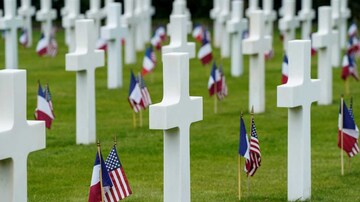
Some 20,000 Normandy civilians were killed in the invasion and as Allied forces fought their way inland, sometimes field-by-field through the leafy Normandy countryside that helped conceal German defenders. Only in late August of 1944 did they reach Paris. Allied casualties in the Normandy campaign were also appalling, with 73,000 troops killed and 153,000 wounded. (Image: Reuters)
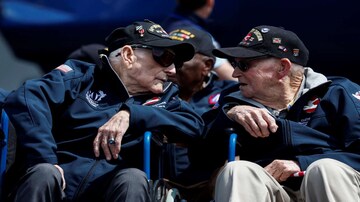
Allied bombing was aimed at stopping Hitler from sending reinforcements and at prying his troops out of the "Atlantic Wall" of coastal defenses and other strongpoints that German occupation forces had built with forced labour. The list of Normandy towns left ruined and counting their dead grew with the Allied advances: Argentan, Aunay-sur-Odon, Condé-sur-Noireau, Coutances, Falaise, Flers, Lisieux, Vimoutiers, Vire and others. Leaflets scattered by Allied planes urged civilians to “Leave immediately! You do not have a minute to lose!" but often missed their targets.

French President Emmanuel Macron paid homage to civilian victims in commemorations on Wednesday in Saint-Lo, recalling how the Normandy town became emblematic of losses from Allied bombing when it was razed on June 6 and 7, 1944. The death toll was 352, according to Boivin and Garnier's study. Playwright Samuel Beckett dubbed Saint-Lo “The Capital of the Ruins” after working there with the Irish Red Cross. (Image: Reuters)

Macron said Saint-Lo was “a necessary target" because Allied bombers were aiming to prevent German reinforcements from reaching the invasion beaches and described it as "a martyred town sacrificed to liberate France.” Those killed in Saint-Lo included Marguerite Lecarpentier's older brother, Henri. She was 6 at the time. Henri was 19 and he'd been helping another man pull a teenage girl out from under debris when the town was bombarded again. All three were killed. Marguerite's father later identified her brother's body “because of his shoes, which were new,” she said. (Image: Reuters)
